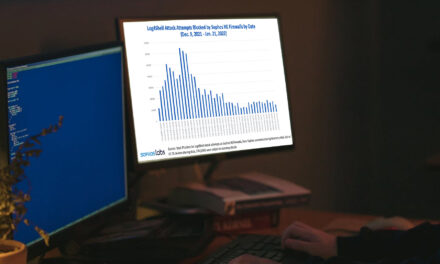Businesses need to be aware of the impact of COVID-19 and the challenges of a remote workforce.
Businesses operating on a work-from-home model can be a demanding situation for IT teams, as security is critical.
However, having the right tools in place can help organizations navigate through the concerns. With tools such as multi-factor authentication (MFA), single sign-on (SSO) functionality, tamper-evident logging, and automation, IT teams can help enforce compliant data security practices while enabling employees to collaborate efficiently.
Forinsights into the challenges and steps organizations can take to ensure security and productivity, CybersecAsia spoke toJohn Yang, Vice President, Asia Pacific and Japan, Progress:
What are the top barriers impeding people’s ability to work from home?
Yang: From a technical and cybersecurity perspective, the biggest challenges when managing remote employees are not training or application troubleshooting. The biggest challenge employees face is login issues and secure connectivity. Weak connection can prevent employees from being efficient and slow down collaboration across teams. Since network connectivity can be spotty or inconsistent in various places, mobile apps that utilize information cached on the device make for a far smoother experience.
Unfortunately, not every IT position is conducive to telecommuting, and it is important to make sure these roles are managed with this in mind. IT professionals may need to have ready access to infrastructure that is on premise, and remote working discourages them from doing so. When IT teams do not have the right tools while working remotely, they are unable to help employees solve technical issues quick enough.
In what ways do weak security measures critically impact employee experience and productivity?
Yang: Weak security measures such as the need to constantly reset passwords prevent remote workers from being productive. Not only that, but many employees are often not aware of the risks of using public Wi-Fi to access confidential data, making them even more vulnerable to man-in-the-middle attacks. When working remotely, employees may choose to use their own apps or services to send and receive sensitive data. Tools such as Dropbox and Google Drive are of utmost concern for IT since they do not provide the proper insight into where sensitive data resides at rest and in motion.
What are some key areas of impact on customer experience for an organization?
Yang: On the bright side, remote workers are likely to be more engaged and less stressed – meaning customers may receive better support, provided the person working from home has the right technology and internal support. Remote working can also enhance efficiency if there are seamless workflows between teams in different regions. Technology such as Teams and Zoom have helped employees to stay engaged, resolve customer issues on first contact, and achieve optimal efficiency.
Remote working has also meant companies are able to recruit talent from their local regions. This gives companies a globally distributed team which provides customers more support around the clock. There would be no need to put employees on shift work, and local staff are better able to understand local cultures and provide more personalized experiences for customers.
However, the lack of tools can create more challenges. The pandemic has made it harder for customer service representatives as the learning curve becomes steeper for new employees. Many organisations that were not prepared for remote work had to purchase new equipment, and many employees had little time to become accustomed to these new technologies. Businesses that did not prioritize onboarding new employees with the right skills and training will see their employees struggle more as they work remotely.
How can businesses enforce compliant data security practices while also enabling employees to collaborate efficiently?
Yang: This requires employee training about security awareness and policies in tandem with deploying software tools that help to secure and manage data access and data transfer. WFH elevates the requirement for such tools to not only enforce encryption policies, but also enable automation and activity tracking. This way IT can manage scale and enable compliance with regulations such as PCI, HIPPA and GDPR.
How does multi-factor authentication play an important role for remote working?
Yang: Multi-factor Authentication, often referred to as MFA, is a method of authentication and access control that adds an additional factor, aside from username and password, to the authentication process. Typically, this is achieved by pairing something the user knows, such as his or her username and password combination, with something the user has, such as a push notification to their phone, or a one-time password token.
Multi-factor authentication allows IT teams to take an inside-out approach. IT teams can identify and prioritize which systems to protect first with MFA. As employees work remotely and have a more relaxed work schedule, they can be accessing documents past the usual 9 to 6, and this could increase risks if documents are not saved properly. With this additional barrier, employees are then encouraged to only access authorized applications when collaborating, sharing and performing work on sensitive data. This becomes a great opportunity for IT teams to educate employees on how remote working is increasing the organization’s attack surface.





















